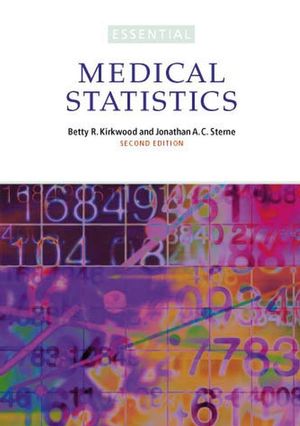Essential Medical Statistics, 2nd EditionISBN: 978-0-86542-871-3
Paperback
512 pages
June 2003, Wiley-Blackwell
 |
||||||
1. Using this book.
2. Defining the data.
3. Displaying the data.
Part B. Analysis of numerical outcomes.
4. Means, Standard Deviations and Standard Errors.
5. The Normal Distribution.
6. Confidence Interval for a Mean.
7. Comparison of two means: confidence intervals, hypothesis tests and P-values.
8. Using P-values and confidence intervals to interpret the results of statistical analyses.
9. Comparison of means from several groups: analysis of variance.
10. Linear Regression and Correlation.
11. Multiple Regression.
12. Goodness of fit and regression diagnostics.
13. Transformations.
Part C. Analysis of binary outcomes.
14. Probability, risks and odds (of disease).
15. Proportions and the binomial distribution.
16. Comparing two proportions.
17. Chi-squared tests for 2 × 2 and larger contingency tables.
18. Controlling for confounding: stratification.
19. Logistic regression: comparing two or more exposure groups.
20. Logisitic regression: controlling for confounding and other extensions.
21. Matched studies.
Part D. Longitudinal studies: Analysis of rates and survival times.
22. Longitudinal studies, rates and the Poisson distribution.
23. Comparing rates.
24. Poisson regression.
25. Standardisation.
26. Survival analysis: displaying and comparing survival patterns.
27. Regression analysis of survival data.
Part E. Statistical modelling.
28. Likelihood.
29. Regression modelling.
30. Relaxing model assumptions.
31. Analysis of clustered data.
32. Systematic reviews and meta-analysis.
33. Bayesian statistics.
Part F. Study design, analysis and interpretation.
34. Linking analysis to study design: summary of methods.
35. Calculation of Required Sample Size.
36. Measurement error: assessment and implications.
37. Measures of association and impact.
38. Strategies for analysis.
APPENDIX: Statistical Tables.
Bibliography



